Moab is one of the most popular mountain bike destinations in the United States. Infamous ls like the Whole Enchilada bring visitors from all over the world to the tiny corner of southeastern Utah.
Beginning in March of 2026, Moab will become even more popular. Starting next year, the area will open over 200 miles of mountain biking trails to Class 1 e-bikes.
To E-Bike or not to E-Bike?
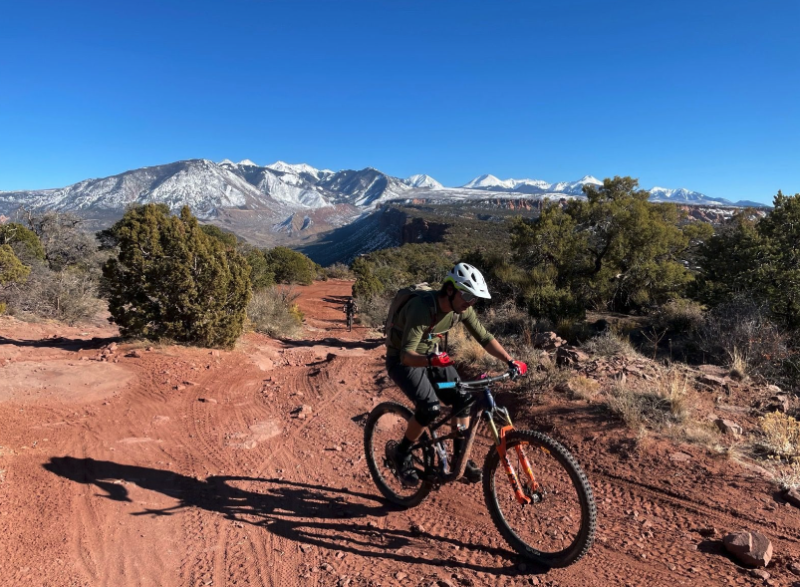
So, why can’t we just ride e-bikes on any trail? They’ve obviously become more popular in recent years, with every major mountain bike brand offering at least one e-bike in their lineup. Why can’t we just jump on a Moab trail on an e-bike and go for a rip?
Without delving too deeply into the debate over electric vs. analog politics, land management is often the reason e-bikes are not permitted on many trail systems. Especially out west, much of the public land is managed by the Bureau of Land Management (BLM) or the Forest Service (USFS). Much (if not all) of the trails in Moab are on BLM-managed land.
While there can be complex issues at hand, for the sake of this brief article, let’s try to simplify things. Traditionally, trail categories on BLM or USFS land are “motorized” or “non-motorized.” Until recently, all we knew of mountain bikes fell into the “non-motorized” category, and thus they landed on non-motorized trails where approved.

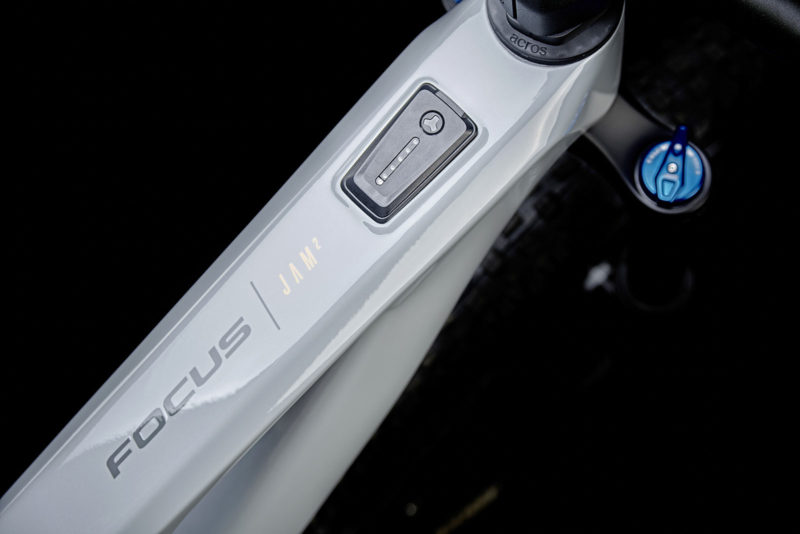
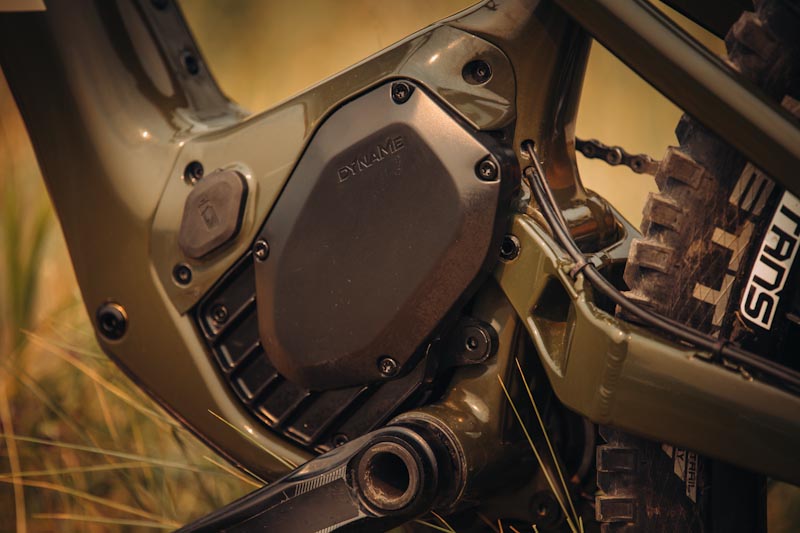
As e-bikes became more common, many of the issues surrounding e-bikes on trails were realized as, well, non-issues. Weight was an initial concern, as many believed the extra 15–20 pounds of an e-bike would damage the trails. However, while e-bikes are certainly heavier than their non-electrified counterparts, this argument didn’t factor in rider weight.
With weight not holding up, many turned to the motorized aspect of e-bikes. “They have motors like dirt bikes; they’ll damage our trails,” was the common thread. But, as we came to find, 750 watts is not enough to rut a trail like a dirt bike can, and so that argument also fell through.
As time passed, e-bikes gained more acceptance and became visible in more locations. However, they were still typically not allowed on many of the USFS and BLM trails. And while this may have been due to local politics (this is what I didn’t want to get into), the “No E-Bikes” decision was typically based on trail designations — whether motorized or non-motorized. And, again, the mountain bike trails e-bikers wanted to ride were almost always designated “non-motorized.”

But even the federal government can change (okay, I’m really not going to go there), and in recent years, we have seen more federally managed land open its trails to Class 1 e-bikes. And that is precisely what is happening right now in Moab, Utah.
Changes in Moab
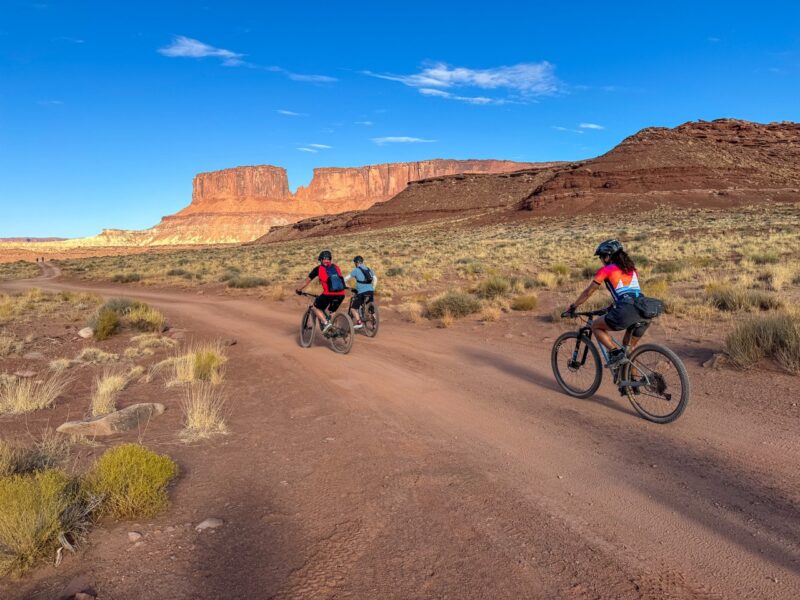
So, what is happening in Moab? Are there any significant changes you need to be aware of? Well, yes and no.
The big change is that 211.2 miles of mountain biking trails in and around Moab, Utah, will allow Class 1 e-bikes come next spring. Does this change anything for those who are riding these trails on analog bikes? Well, not really, other than you might now share the trail with another rider on a Class 1 e-bike.
And for those e-bike riders already champing at the bit. Your time is at hand.

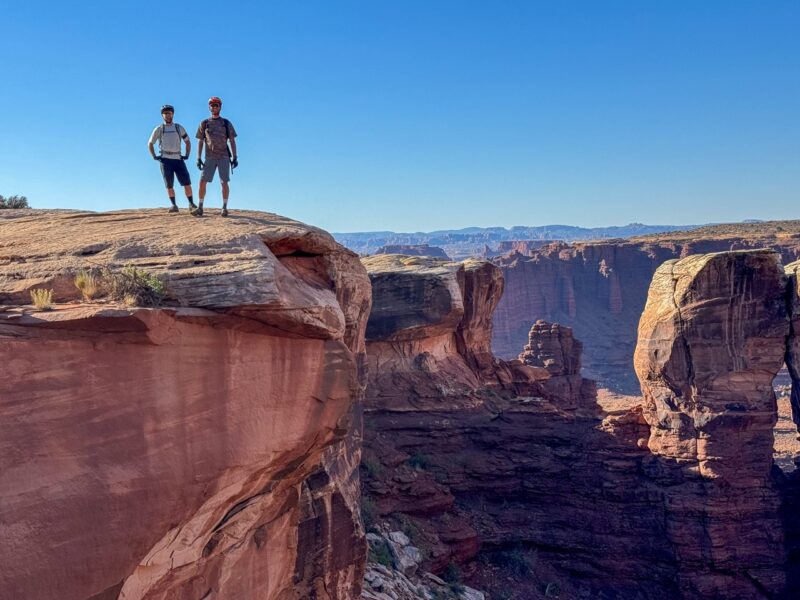
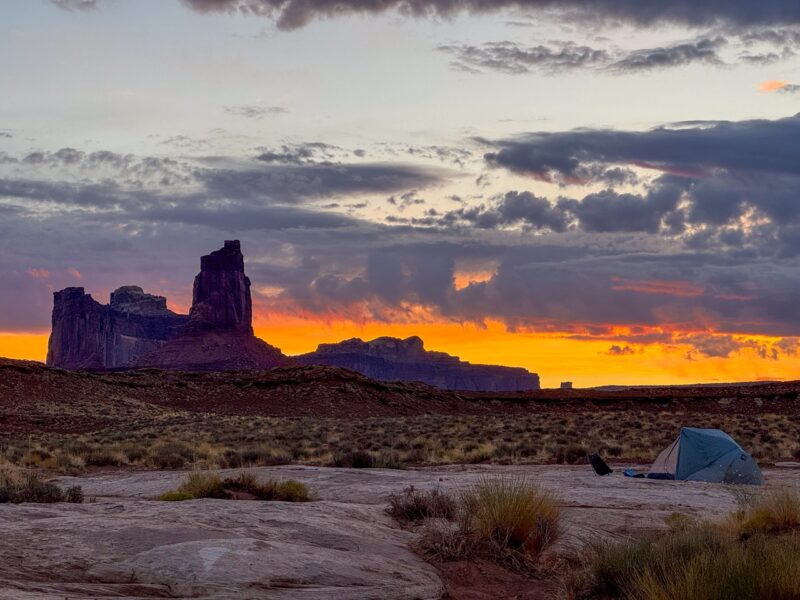
The proposal to open the trails to e-bikes has been on the desks of officials at the Moab Field Office BLM for a few years now. For those following changes or updates of federally-managed trail systems, you’ll know that “a few years” is relatively fast.
As is common with many of these proposals on BLM or USFS land, the land manager proposes multiple options. Option one was no change, with the trails remaining completely non-motorized. Option two was a gradual change, with the proposed trails allowing Class 1 e-bikes in phases. The third, and final option was to authorize Class 1 e-bike usage on all proposed trails.
After the BLM’s environmental assessment (EA) of the impact of e-bikes on Moab’s trails, the Moab Field Office issued this statement:

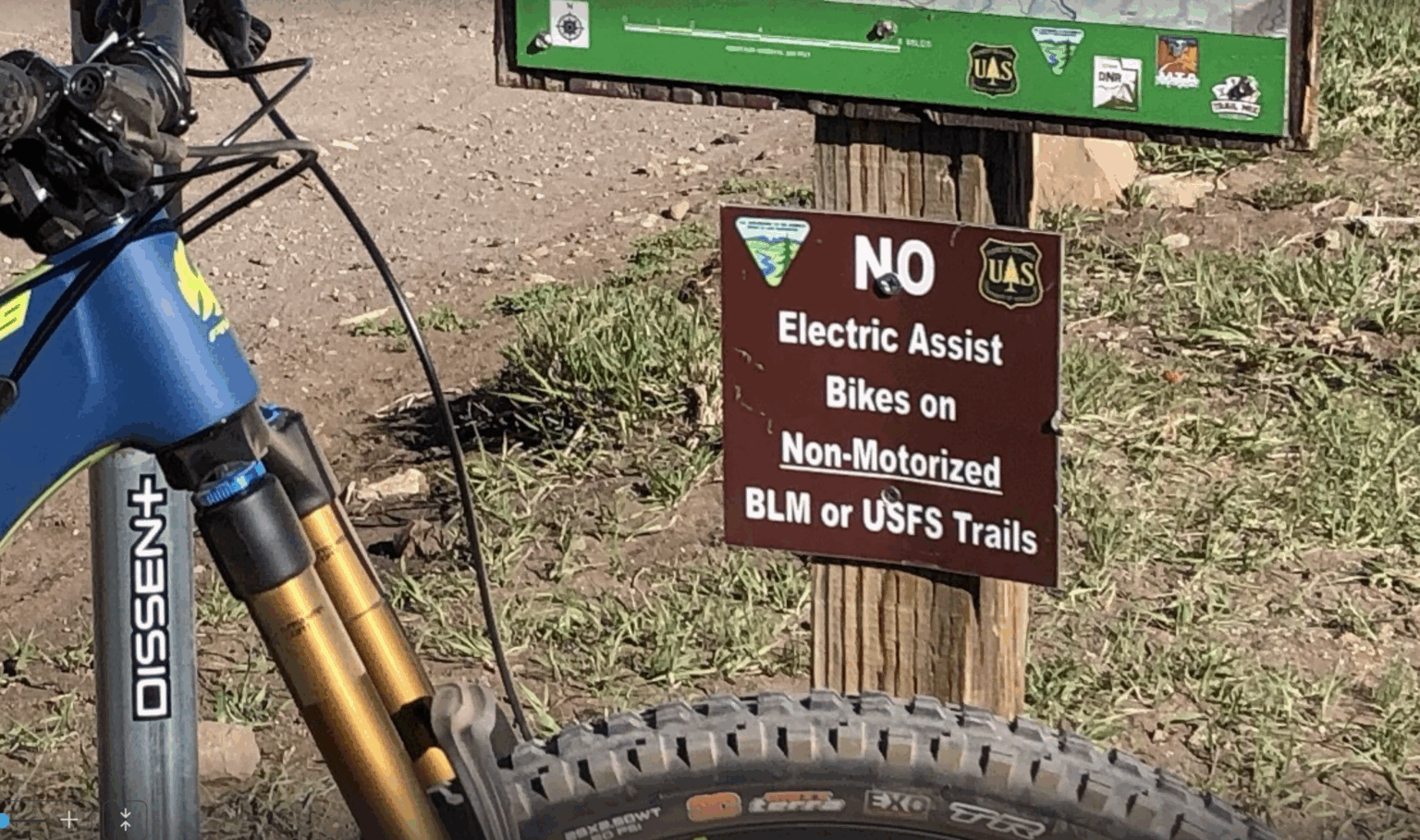
“Based on my review of the attached EA and supporting documents, I have determined that Alternative C — Authorization of Class 1 E-bikes on All Identified Trails will not significantly affect the quality of the human environment. Therefore, an environmental impact statement (EIS) is not required. This finding is based on the degree of the effects described in the following sections within the identified affected environment.”
-David Pals, Field Manager, Moab Field Office.
In other words, e-bikers everywhere can rejoice; Moab will be open to e-bikes.
Restrictions in Moab?
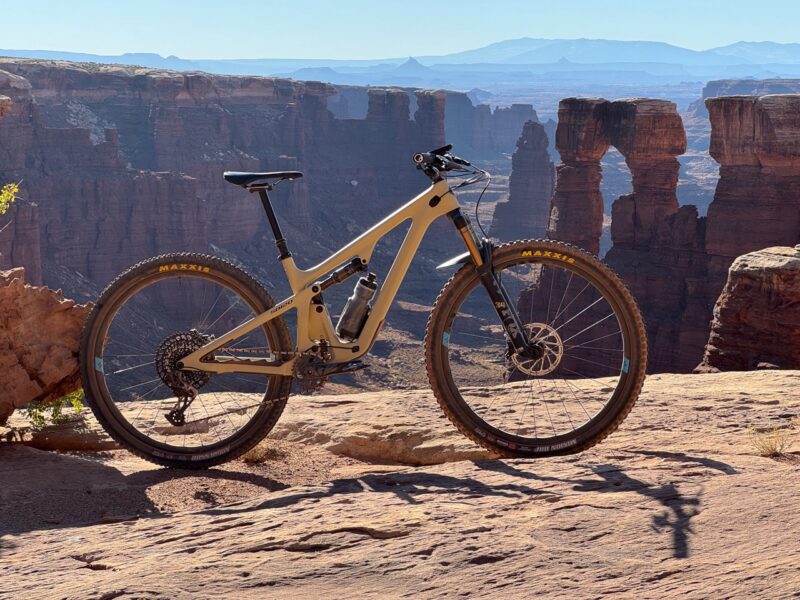
Okay, it won’t be a complete free-for-all on e-bikes in the area. While the approved proposal opens over 200 miles of mountain bike trails to e-bikes, it isn’t exactly the wild west.
First, this change applies only to Class 1 e-bikes. A Class 1 e-bike has a motor only assisted by pedaling (no throttle) and reaches assisted speeds of 20 MPH. Class 2 also has an assisted speed limit of 20 MPH, but does include a throttle along with pedal assist. A Class 3 e-bike is pedal-assisted only, but it can reach speeds of up to 28 MPH.
Regardless of the classification, these e-bikes all have a power output limit of 750 watts. This means that e-motos, such as Sur-rons, which are commonly labeled as “e-bikes,” are absolutely not allowed (and are not e-bikes).

While a change of over 200 miles of Moab trails is massive, it pertains to specific trails. The trails now allowing Class 1 e-bike usage are:
- 7-Up Mountain Bike Trail
- Amasa Back Mountain Bike Trail System
- Athena Mountain Bike Trail
- Baby Steps Mountain Bike Trail
- Gemini Bridges Area Mountain Bike Trail System
- Gold Bar Rim Mountain Bike Trail
- Horsethief Mountain Bike Trail System
- Hunter Canyon Rim Mountain Bike Trail
- Jackson Mountain Bike Trail
- Klondike Bluffs Mountain Bike Trail System
- Klonzo Mountain Bike Trail System
- Kokopelli Mountain Bike Trail (1.7 miles of non-motorized singletrack trail)
- Moab Brands Mountain Bike Trail System
- Navajo Rocks Mountain Bike Trail System
- Pipe Dream Mountain Bike Trail
- Portal Mountain Bike Trail
- Raptor Route Mountain Bike Trails — Hawks Glide, Falcon Flow, Kestrel Run
To be clear, not every trail or all trail systems in Moab will allow e-bikes. Porcupine Rim Singletrack, Lower Porcupine Singletrack, Fisher Mesa, Hidden Valley, and Eagle Eye will all remain closed to e-bike usage.
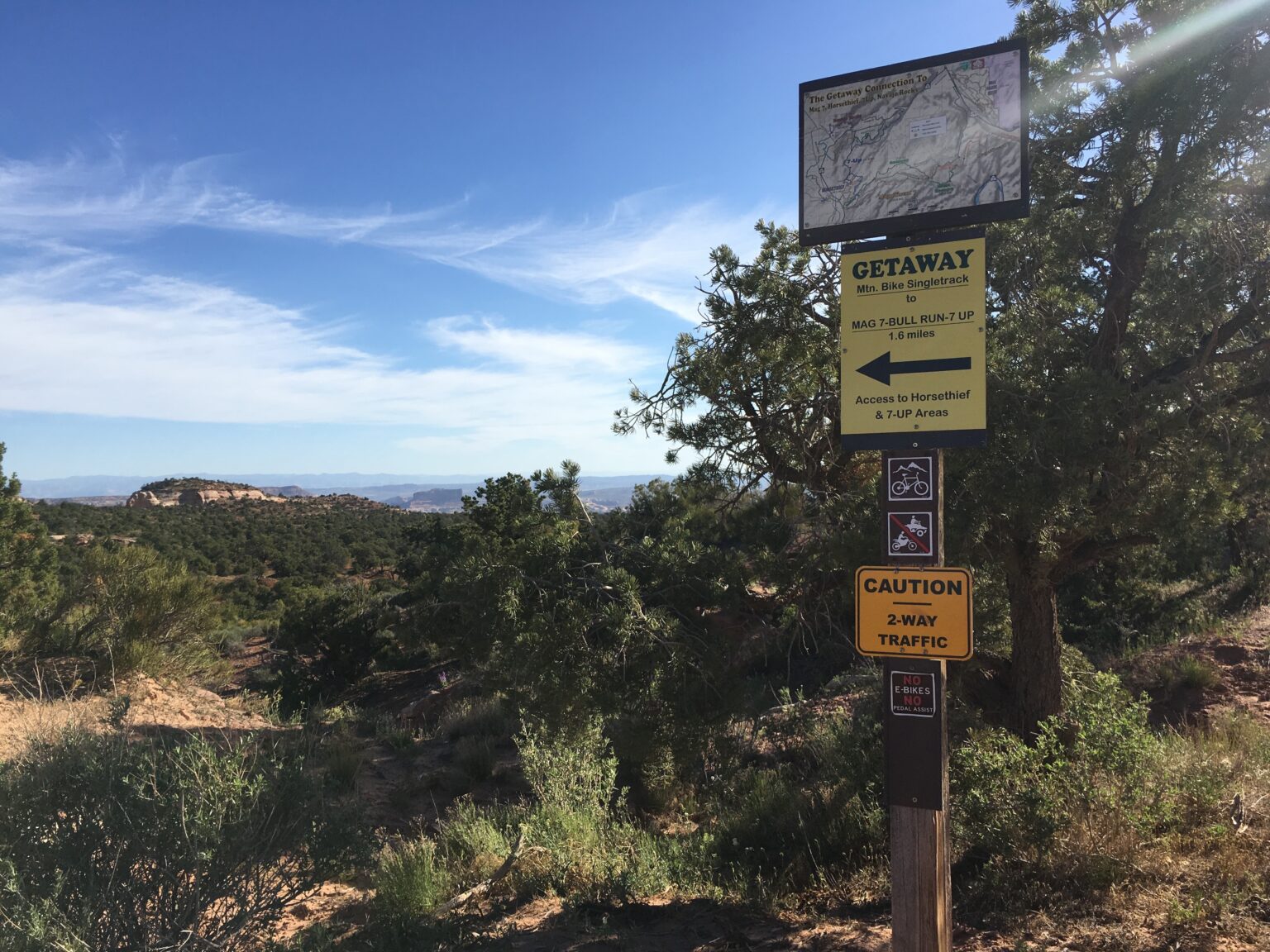
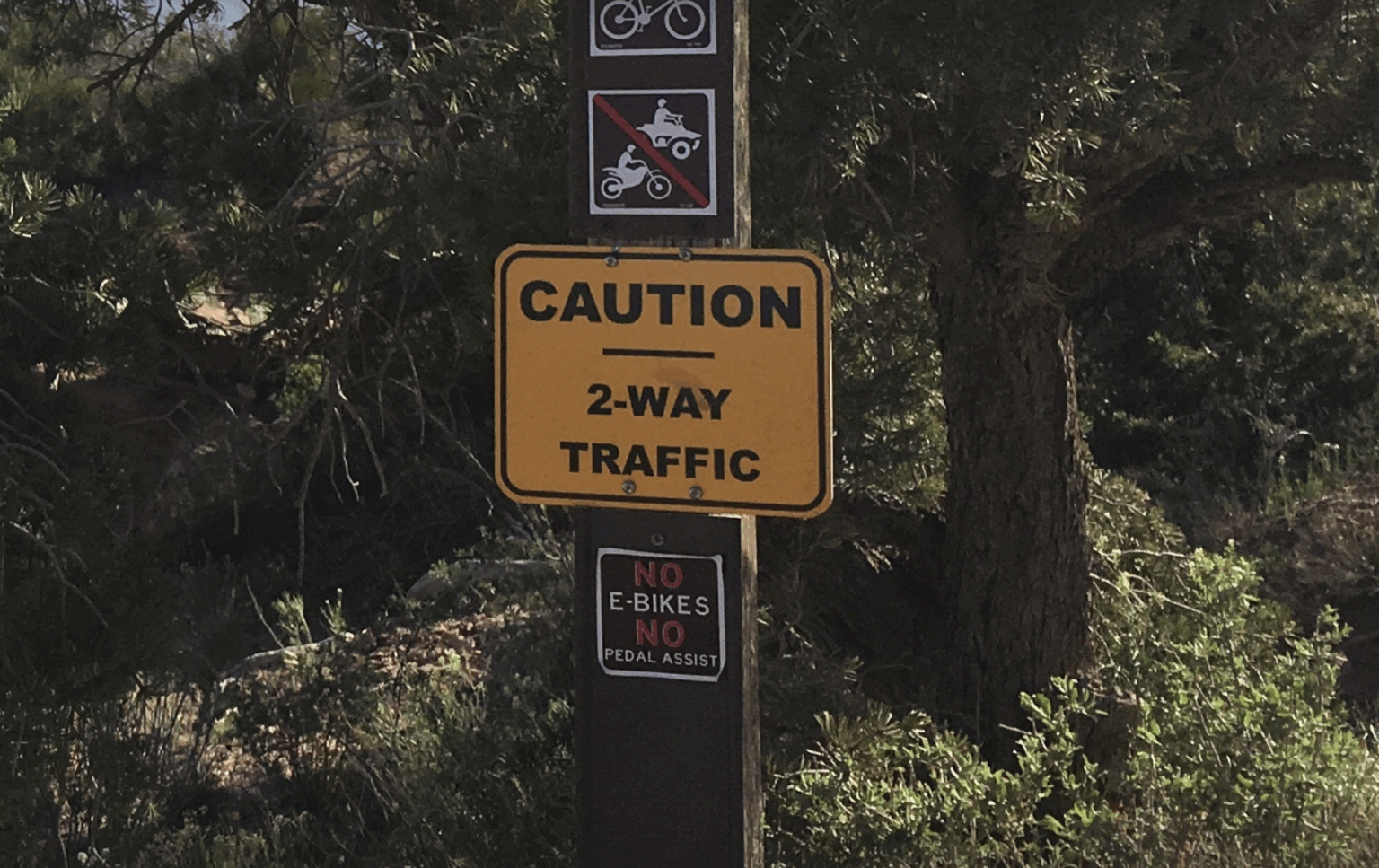
Eagle Eye is a part of the Raptor Route trails. Others in that system (mentioned above) will allow e-bikes, but Eagle Eye won’t. E-bikes also aren’t permitted on the entirety of the Whole Enchilada trail system, as the route includes Porcupine Rim.
While some trail changes may surprise you, perhaps you’re also asking why some popular trails aren’t on the list. Truth be told, these popular Moab mountain bike routes may already be designated “motorized.” Popular trails, such as Slickrock, have these designations.
To see the exact routes open to Class 1 e-bikes in Moab, check out the BLM’s interactive map showing the new changes.

